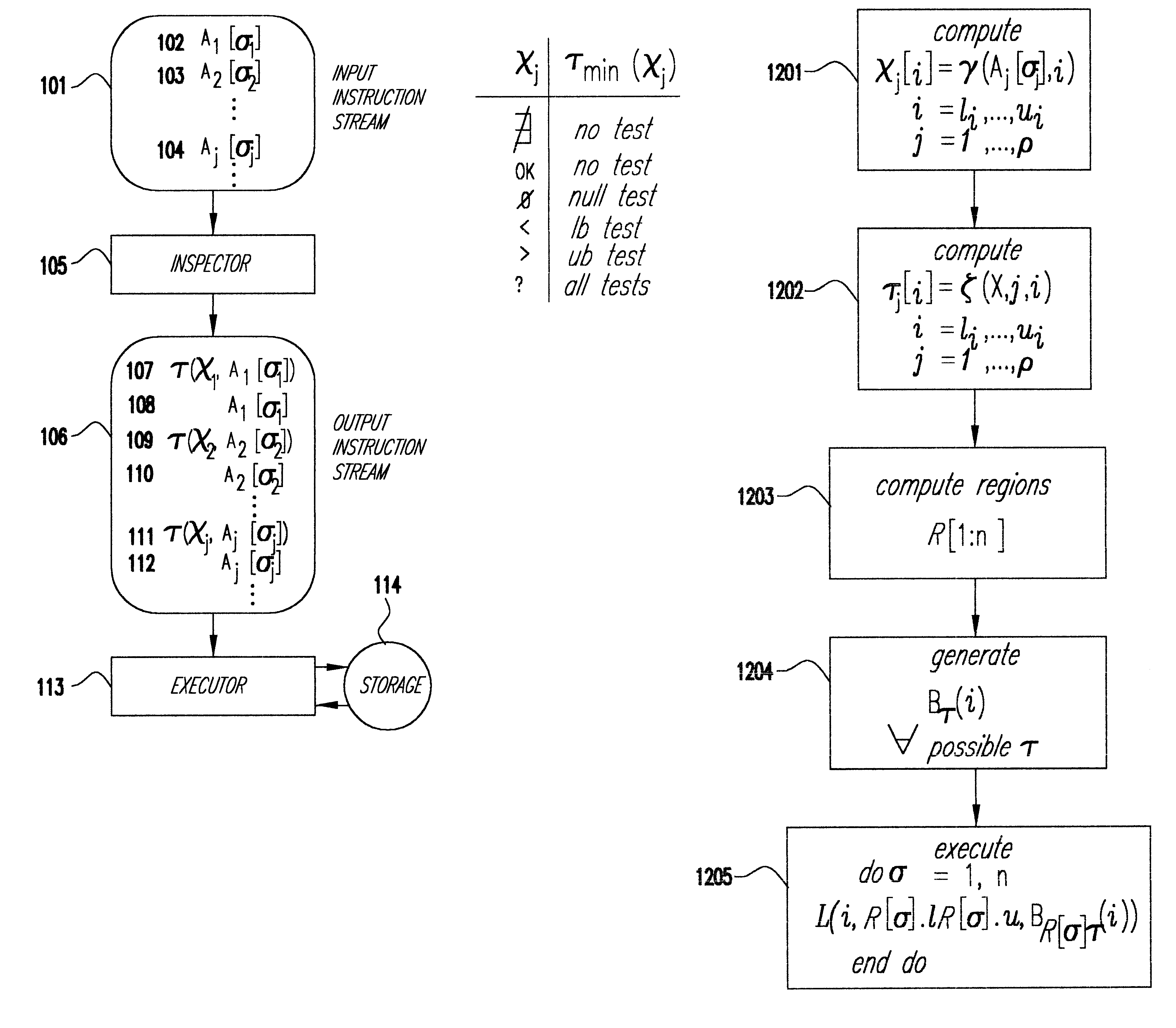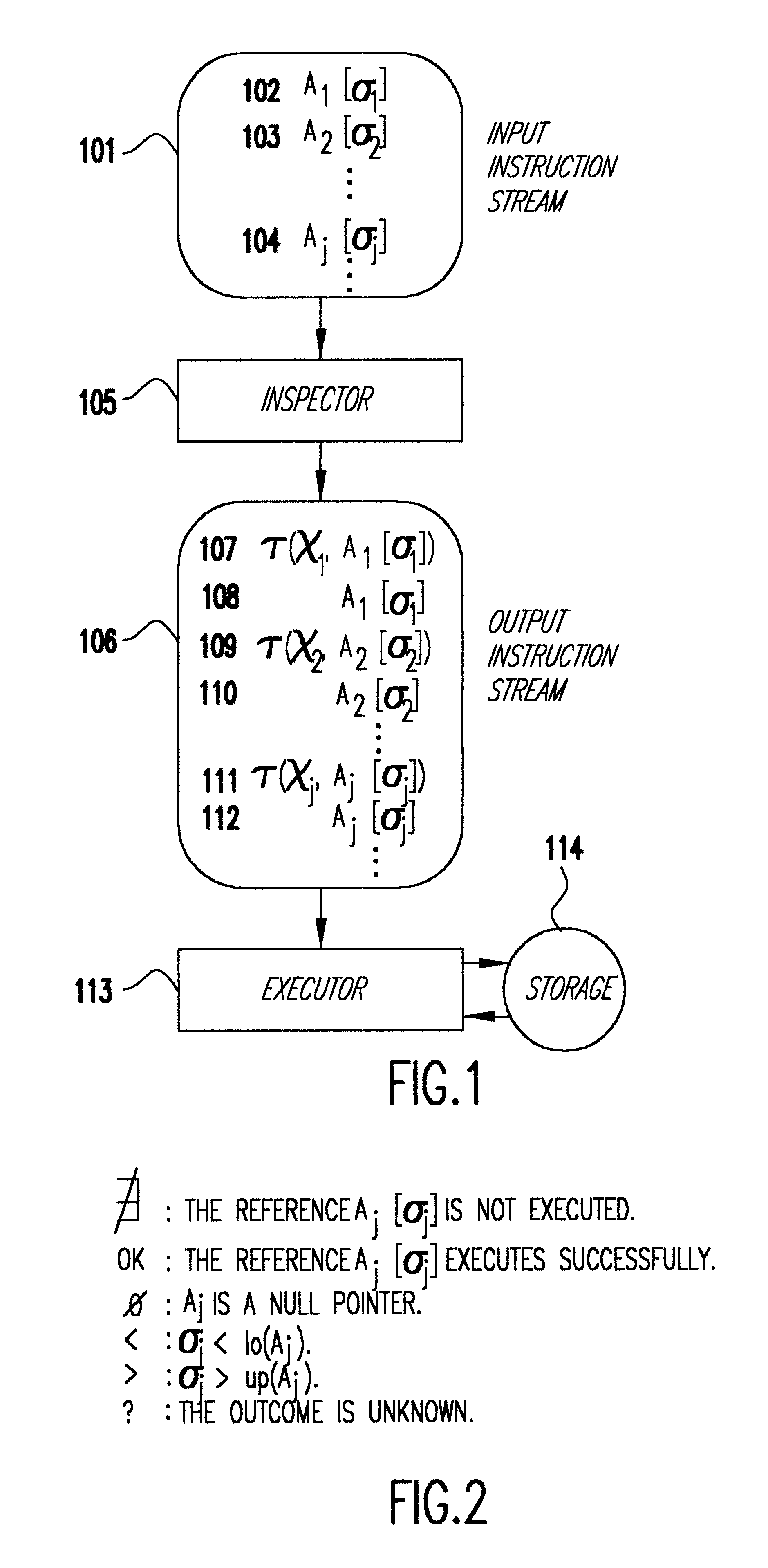Method for optimizing array bounds checks in programs
a program and array bounds technology, applied in the field of computer programming, can solve the problems of affecting the execution time of the program, and subtle and dangerous errors in computation
- Summary
- Abstract
- Description
- Claims
- Application Information
AI Technical Summary
Problems solved by technology
Method used
Image
Examples
Embodiment Construction
Referring now to the drawings, and more particularly to FIG. 1, there is shown an embodiment of the invention. A computer program is represented by an input instruction stream 101. The instruction stream contains instructions from an instruction set. Some of these instructions are explicit array references as shown in 102, 103 and 104 of FIG. 1. 104 represents a generic array reference. A.sub.j is the array or array axis being indexed, and .sigma..sub.j is the subscript indexing into A.sub.j. The instructions are processed by the inspector 105, that determines the outcome .chi..sub.j of each array reference A.sub.j [.sigma..sub.j ]. Possible values for .chi..sub.j are given in FIG. 2. The inspector 105 then generates an output instruction stream 106 to the executor 113, which executes the instructions.
For each array reference A.sub.j [.sigma..sub.j ] in the input instruction stream 102, inspector 105 generates a pair of instructions (.tau.(.chi..sub.j,A.sub.j [.sigma..sub.j ]),A.sub...
PUM
 Login to View More
Login to View More Abstract
Description
Claims
Application Information
 Login to View More
Login to View More - R&D
- Intellectual Property
- Life Sciences
- Materials
- Tech Scout
- Unparalleled Data Quality
- Higher Quality Content
- 60% Fewer Hallucinations
Browse by: Latest US Patents, China's latest patents, Technical Efficacy Thesaurus, Application Domain, Technology Topic, Popular Technical Reports.
© 2025 PatSnap. All rights reserved.Legal|Privacy policy|Modern Slavery Act Transparency Statement|Sitemap|About US| Contact US: help@patsnap.com



